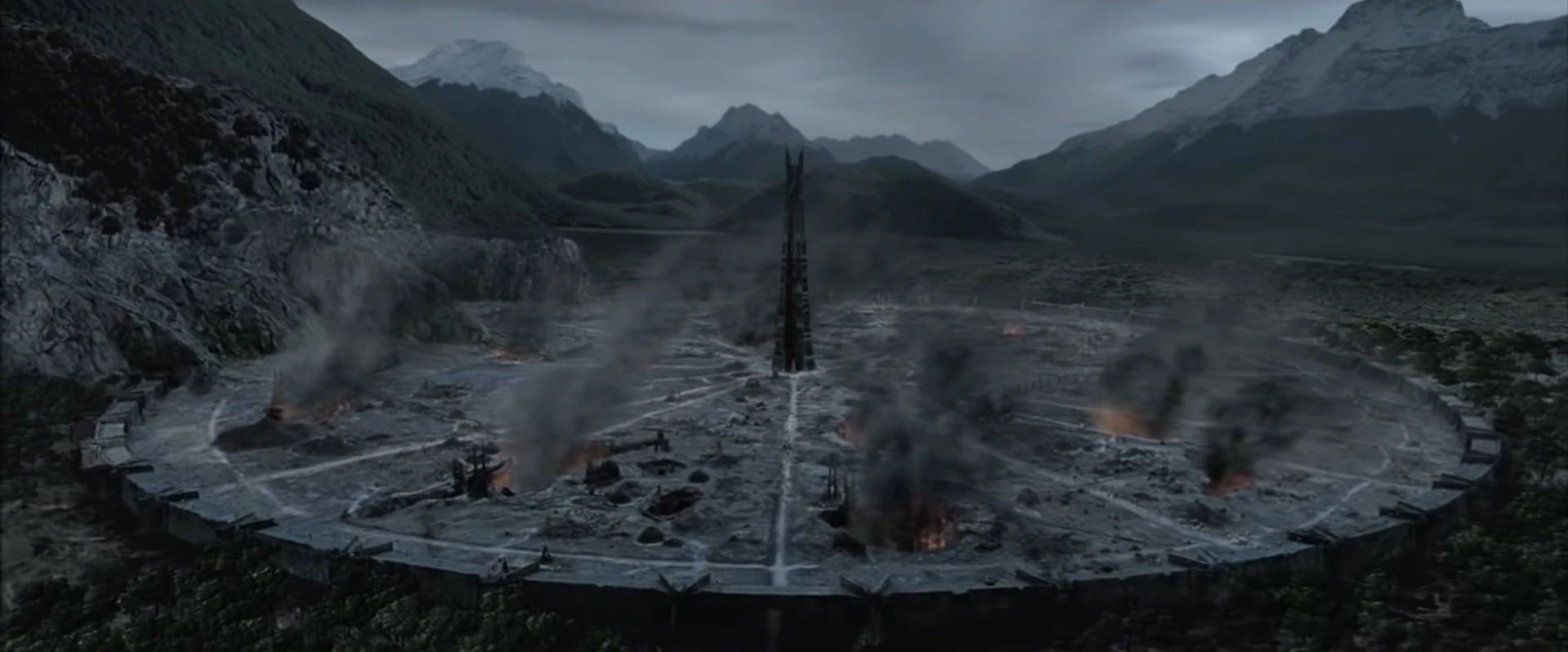 |
| Image grabbed from Darkest Dungeon |
Ghouls are a neat concept. They have potential cannibal backgrounds, sharp claws and teeth, and tongues stretched out for better bone marrow suckin'. Typical zombie stuff, really, but they also have the added twist of being demonic. Here's how ghouls operate in one of my worlds I'm slowly developing.“Stay close,” Jean muttered, the length of his sword slick with blood. “They only follow if you’re alone.” It was more a guess than a fact, but a guess that kept the two fresh-faced ribbonsmen close to the captain. Outside the dilapidated shack the men took as refuge stirred a small group of hunchbacked monsters with whispy white skin stretched tight over long-limbed muscles. Jean could hear one of them gnawing on lieutenant Martin’s arm, the same one which only minutes ago kept a steady grip on his sword before the ghouls sunk their claws into his skull.
Rather than a necromancer raising a ghoul with the mutter of a spell, ghouls are usually the result of a magical mishap in an area. In the techno-magik state of Tothegsia, small magical anomalies weaken the barrier between the planes. Some of them connect to the Sewers of Hell, an ever-growing labyrinth of spacious sewers. It is here where ghouls fester, living like rats feasting on the waste of Hell's citizens. Knowing their origins brings some of their odder features to light: their shadow's skinny tail, the constant wiggling of their holes-where-noses-usually-are, their dirk-like claws as thick as a pole-arm's head. When you see a ghoul, it's usually the last thing you see - unless there's dead meat around.
Ghouls have a heavy preference for dead flesh. This taste is developed from their natural habitat in the Sewers of Hell, where ghouls pick apart the corpses of punished sinners. Their eyes are hyper-sensitive to light, but work incredibly well in the dark, dank pits of the brimstone sewers. Since corpses in Hell are coated in a thick layer of rock, a ghoul's tough dagger-like claws are perfect for breaking through the shell. In fact, if given the proper sanitary measures and effort, ghoul claws make an excellent gift for your eccentric wizard friend who's favorite food is crab.
 |
| Ghouls like hanging out around cemeteries. Photo from the British Library. |
Sometimes a ghoul gains a bit more sentience than its peers, these are known as ghasts. They grow psychically sensitive and begin to develop a personality of their own. This process naturally occurs when enough ghouls are grouped tightly in one spot such as a single cemetery or spacious sewer dead-end. Given enough time, a ghast could theoretically reach a level of intelligence matching that of the common Esarian person. With enough time, they might even exceed that. This worry is what propels adventuring groups such as The Golden Ribbon Exchange to be hired for local purges - ghouls left to their own devices for too long might realize there's bigger things out there than eating dead meat.
 |
| Imagine if they voted, yuck! Image from the British Library. |
When hunting, ghouls travel in packs if possible. Small platoons that grow no bigger than 7 or 8 of them, though usually capering off at 3 or 4. In the rank Sewers of Hell, ghouls group up more often, and in bigger numbers. The highest recorded pack of ghouls spotted in the Sewers has been 12, recorded by a ribbonsmen who developed a deep fear of sewage and now requires a small group of escorts to use the privy.
Sometimes when ghouls are clustered in an overcrowded spot for some time, their shadow's tails can get wrapped up within each other. This is known as a ghoul king, a bundle of ghouls psychically tied to each other so they cannot wander more than 5 feet from another. Ghoul kings are incredibly dangerous, as once the tails have locked into each other the ghouls passively feed off one another's intellect. This can quickly develop into each ghoul of the pack becoming a ghast, with the time it takes to reach such a stage growing exponentially to the number of ghouls in the ghoul king. When this happens, the pack is known as a ghast king.
Tothegsian Ghoul Stat Block
Armor Class: like studded leather
Health: 3HD
Damage Resistances: poison
Multi-attack: A ghoul can attack 2 times each turn
Claws - +3 To Hit, damage like shortsword, average difficulty CON save to avoid poisoning
Planes Adjustment - If the ghoul is in Hell, they get 1 additional HD and 1 additional attack.
Tothegsian Ghast Stat Block
Armor Class: like chain shirt
Health: 4HD
Damage Resistances: poison
Damage Vulnerabilities: psychic
Multi-attack: A ghast can attack 2 times each turn, or forgo one attack to let a nearby ghoul attack immediately
Claws - +4 To Hit, damage like shortsword, same save as Ghoul stat block
Planes Adjustment - If the ghast is in Hell, they get 1 additional HD and do not need to forgo one attack to let a nearby ghoul attack immediately
Ghoul King Stat Block
Armor Class: like studded leather
Health: 1HD per ghoul in the ghoul king
Damage Resistances: poison
Shadow Tails: Ghoul Kings are psionically tied to each other with their shadow's rat-like tails. This connection can be cut by either killing at least half the ghoul in the ghoul king, or by using a shadow weapon to sever the tie.
Multi-attack: A ghoul king can attack 2 times each turn.
Flurry of Claws - +3 To Hit, damage like longsword, challenging CON save to avoid poisoning
Plane Adjustment - If the ghoul king is in Hell, they get 1 additional attack
Ghast King Stat Block
Armor Class: like chain shirt
Health: 2HD per ghoul in the ghast king
Damage Resistances: poison
Damage Vulnerabilities: psychic
Spellcasting: Ghast Kings can cast fire-based psionic spells such as Fireball, Scorching Ray, and Fire Bolt. Their spellcasting To Hit is +3 and their Spell Save is DC13, unless they are in close range of a wizard - then they use the wizard's To Hit and Spell Save.
They can cast a number of times equal to half their total HD count per day.
Shadow Tails: Ghast Kings are psionically tied to each other with their shadow's rat-like tails. This connection can be cut by either killing at least half the ghasts in the ghast king, or by using a shadow weapon to sever the tie. Once either condition is met, each ghast in the ghast king becomes a ghoul instead.
Multi-attack: A ghast king can attack 2 times each turn, or attack 1 time and cast 1 spell.
Flurry of Claws - +4 To Hit, damage like longsword, challenging CON save to avoid poisoning.
Plane Adjustment - If the ghast king is in Hell, they get 2 additional HD per ghast in the ghast king and 1 additional attack per turn.

